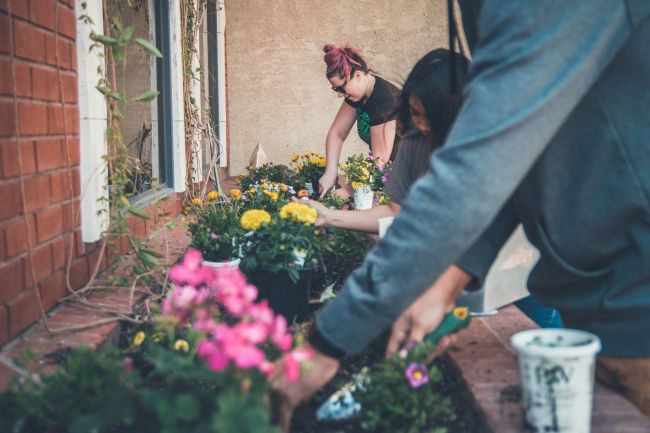The Educational Value of Starting a College Campus Garden

Picture a patch of earth on a college campus, once overlooked, now bursting with vegetables, herbs, and flowers. Students gather there not just to tend plants but to learn, collaborate, and create something lasting. A campus garden may seem simple, yet it can carry immense educational value, blending theory with practice in ways few classrooms can match.
For international and domestic students alike, the experience of working in a garden provides a grounding contrast to lectures and digital coursework. As one professor put it, the garden “teaches in dirt and sunlight, not PowerPoint slides.” That kind of learning sticks. When it comes time to reflect on those experiences in essays or research projects, students may find this custom writing service useful for shaping their observations into polished academic work. A garden provides the stories; the writing support helps turn them into lasting insights.
Hands-On Learning Beyond the Classroom
College courses tend to emphasize abstract thinking and analysis. Gardens flip that by introducing direct, tactile learning. Biology students see ecosystems in action. Environmental majors monitor soil health, measure rainfall, and test water conservation methods. Even art and literature students find creative inspiration in the rhythm of planting and harvest.
The act of growing food transforms ideas into lived knowledge. It also fosters problem-solving: pests, weather changes, or scheduling conflicts require collaboration and adaptability. In this sense, the garden is not just a patch of green but a living laboratory.
Environmental Awareness and Sustainability Education
Campus gardens also nurture environmental literacy, showing students how their actions affect ecosystems. Lessons about climate change or sustainability become vivid when experienced with hands in the soil.
- Composting and waste reduction
- Water conservation methods
- Organic farming practices
- Pollinator-friendly planting
- Seasonal food cycles
These lessons resonate far beyond the campus. Students take with them a deeper awareness of sustainability practices, ready to apply them in workplaces, homes, and communities. A lecture may outline the concept of carbon footprints, but growing food on site teaches what sustainability feels like in daily practice.
Building Community and Collaboration on Campus
Few projects pull together a diverse campus community like a garden. Faculty, students, and staff share responsibilities, creating opportunities for teamwork across disciplines. Social bonds often form between students who might otherwise never meet.
Gardens can also serve as public spaces for workshops, cultural events, or cooking demonstrations. By bringing people together around food and growth, they encourage dialogue across backgrounds and foster a sense of belonging. In an era when students often feel disconnected, gardens act as communal gathering spots that strengthen campus culture.

Health, Wellness, and Stress Relief Benefits
The academic grind takes its toll, and many students report stress, anxiety, and burnout during their college years. Gardening provides a counterbalance. Studies show that time outdoors, exposure to greenery, and physical activity can reduce stress hormones and improve mood.
The simple act of weeding or watering offers mindfulness in motion. Students who struggle with long hours of screen time or academic intensity often describe the garden as a sanctuary where worries feel lighter. It becomes a mental reset button, one that refreshes focus before heading back into exams or essays.
Practical Skills for Future Careers
Campus gardens also prepare students for life after graduation. The skills gained in planning, cultivating, and maintaining a garden translate into leadership, organization, and innovation.
- Learning to manage resources responsibly helps graduates excel in project management.
- Collaborating with peers across disciplines teaches teamwork and communication.
- Experimenting with sustainable practices builds adaptability, a key trait in modern industries.
- Documenting outcomes sharpens research and presentation skills employers value.
These skills may not appear on a transcript, but they carry weight in interviews and professional settings. Even technical abilities, such as calculating crop yields, echo the problem-solving needed in fields as varied as business, science, and engineering. As one faculty member joked, students move from using a calculator exponent in math class to applying those numbers directly in yield projections for their garden plots.
Challenges and How Colleges Can Overcome Them
Of course, no campus project is without obstacles. Gardens require funding, land, and ongoing maintenance. They can also spark debates over priorities when institutions weigh investment in green spaces against more traditional facilities.
Still, many colleges find creative solutions. Some partner with local farms or nonprofits to provide expertise. Others fold gardens into coursework, ensuring steady student involvement. The benefits often outweigh the costs, especially when measured in community engagement and long-term educational value.
Education expert Samuel Gorbold, who collaborates with the essay writing service EssayHub, emphasizes the versatility of gardens as teaching tools. In his view, “They’re spaces where theory and practice meet, and where students realize that learning isn’t confined to lecture halls.” His comment captures why more institutions are rethinking what education looks like and where it can take root.
Conclusion
Starting a college campus garden is more than a sustainability initiative. It’s a commitment to holistic education, blending intellectual growth with hands-on skills, wellness, and community. Students who plant seeds learn lessons about resilience, patience, and collaboration that stay with them long after graduation.
The value of campus gardens lies not just in the vegetables harvested but in the students shaped by the process. With each season, these green spaces continue to teach, reminding us that some of the best education happens outside four walls, beneath open skies


